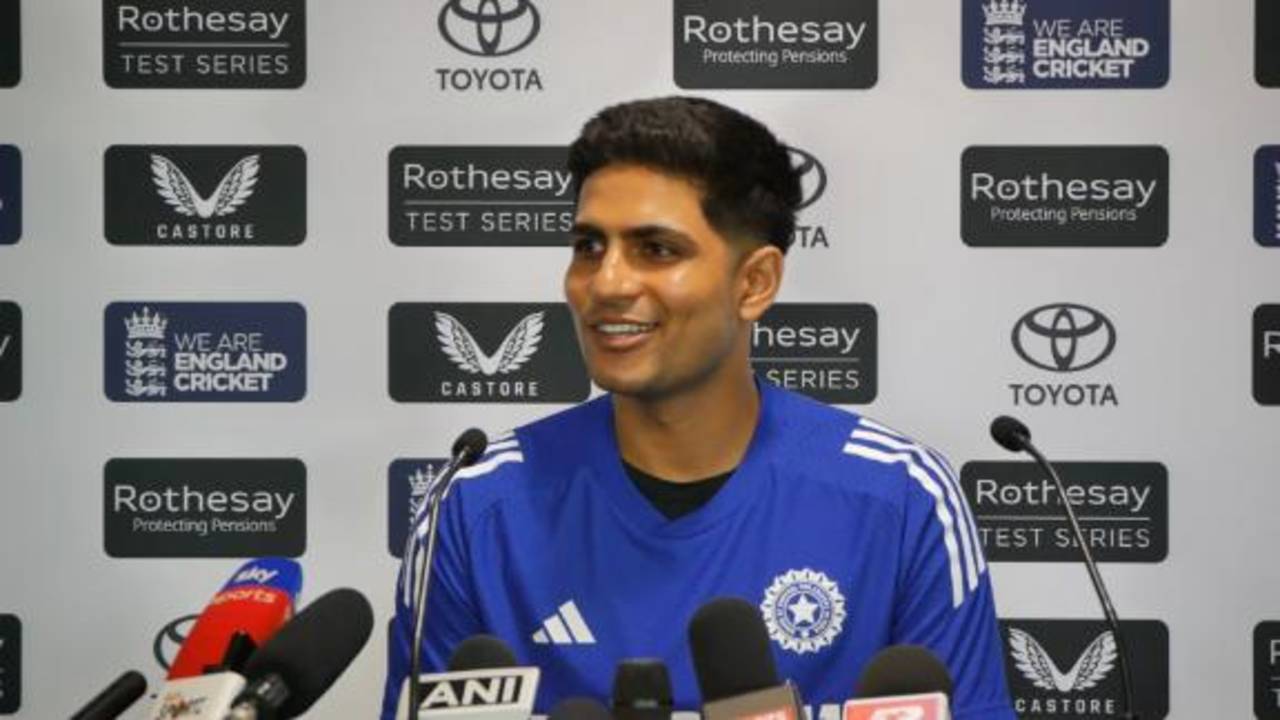It's time for India to show how badly they want 20 wickets
Lower-order runs are useful and can change Test matches, but are they worth it if they come at the cost of bowling potency?
Sidharth Monga
01-Jul-2025
India are worried about their long tail. They keep saying 20 wickets are their priority and that they are willing to play four tailenders if that means getting 20 wickets as cheaply as possible, but believe it once you see it with your own two eyes.
It is clear by now that Shardul Thakur played the first Test at Headingley primarily because of his batting ability. India have repeatedly called him a "bowling allrounder", but used him for just 16 overs out of 182.4. Two days out from the second Test, assistant coach Ryan ten Doeschate was asked why, when the tail hasn't been contributing anyway, India don't just go after 20 wickets by playing four proper bowlers plus Ravindra Jadeja. His response politely suggested that it's great optics to say India can play four tailenders but those advocating it don't have skin in the game.
"You know when you're 430 for 3, it's absolutely fine," ten Doeschate said, "but when you're 200 for 5, it's a very different ball game."
It's not about optics, though. It is about establishing and living with a philosophy to try to win Test matches. Thakur worked as a fourth fast bowler on spicy pitches in 2021; if India had similar confidence in his bowling on the flatter tracks of 2025, they would have used him more.
Since the start of the 2024-25 Australia tour, with the exception of the Perth Test on a spicy pitch, India have struggled to take 20 wickets while staying competitive in a Test match. Thakur, who wasn't in the squad in Australia, has not really proved to be the solution either.

Head coach Gautam Gambhir and chief selector Ajit Agarkar have decisions to make•Gareth Copley/Getty Images
If their nets sessions and public utterances between Headingley and Edgbaston are anything to go by, India seem likely to replace Thakur with Washington Sundar. Captain Shubman Gill said he felt a second spinner could help control the flow of runs when the ball goes soft and India are waiting for the second new ball. Their opponents have the luxury of Ben Stokes, who swung the ball more than anyone else in the first Test, as their fourth quick.
India expect the surface - dry underneath patchy grass, according to them - to assist spin, but if they do go ahead with Washington, they basically give up on the wicket-taking threat of wristspinner Kuldeep Yadav, who, albeit in different conditions, was the Player of the Match in their last Test against England before this tour.
All things being equal, you absolutely want bowlers who can contribute runs, but Kuldeep and Washington, for all the extra runs the latter can bring, are not exactly equal with the ball. Or you want a seam-bowling allrounder who brings wicket-taking threat. India have neither. This is where their commitment to taking 20 wickets as cheaply as possible gets tested. This is where you see if they put their money where their mouth is.
Before you counter any of the team management's arguments, of course, you must look at it from their point of view in good faith. They probably feel that good lower-order batting doesn't just bring runs but also deflates the opposition bowling, and gives India the chance of coming back into the game with the bat in many situations. They may also feel that the bowlers might struggle to create pressure without runs on the board. They may even feel that in the likely absence of Jasprit Bumrah, they don't have the class and the experience in the bowling to take 20 wickets anyway.

For all the runs Washington Sundar could bring, does he present the wicket-taking threat of Kuldeep Yadav?•Getty Images
All of it seems counterproductive, though. Any reduction to the bowling firepower from Headingley only takes India closer to playing for a draw and taking the win as a bonus if the opportunity presents itself.
India need to eliminate all else and condense this debate to runs that extra batting could get them versus runs that extra bowling could prevent by taking wickets quicker. Look at it this way: if you have a wicket-taking attack, a match-winning first-innings total could be 450 rather than 550. Targets could be smaller too. Better bowling attacks don't increase the batters' load but reduce it.
All the arguments of psychology and pressure can be flipped on their head too. Extra runs on the board can only increase the chance of a draw; runs saved by bowling oppositions out can win you games. One extra threatening bowler gives all the bowlers longer breaks between spells. England's four fast bowlers bowled 21%, 21%, 18% and 17% of their overs. India's quicks bowled 24%, 23%, 19% and 9% of their overs. A more equitable workload keeps the bowlers effective for longer.
While the team management may have their reasons to prioritise batting depth, and while it might seem like a drastic change to put 20 wickets first, this might just be the time to take that leap of faith. And India haven't yet ruled it out.
Sidharth Monga is a senior writer at ESPNcricinfo
